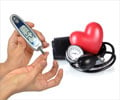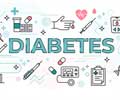- Nateglinide - (https://medlineplus.gov/druginfo/meds/a699057.html )
- Nateglinide - (https://pubmed.ncbi.nlm.nih.gov/11449877/ )
- Drug-drug and food-drug pharmacokinetic interactions with new insulinotropic agents repaglinide and nateglinide - (https://pubmed.ncbi.nlm.nih.gov/17253883/ )
- Information about Nateglinide - (https://www.medindia.net/doctors/drug_information/nateglinide.htm )
- Nateglinide Therapy for Type 2 Diabetes Mellitus - (https://www.researchgate.net/publication/11631854_Nateglinide_Therapy_for_Type_2_Diabetes_Mellitus )
Nateglinide Medication Information
Learn everything you need to know about Nateglinide-pronunciation, uses, dosage guidelines, indications, and when to take or avoid it.
Get up-to-date information on side effects, precautions, warnings, and proper storage to ensure safe usage.
Explore Nateglinide brand names commonly used in India and internationally, along with detailed pricing information. Consult your healthcare provider for tailored medical advice.
Generic Name : Nateglinide Pronunciation : na-te-GLYE-nide ICD Code : Y42.3 Therapeutic Classification : AntidiabeticsBrand Names or Trade Names of Nateglinide
India :
International :
Starlix
Why is Nateglinide Prescribed? (Indications)
This medication is an antidiabetic agent, prescribed for type 2 diabetes. It lowers blood sugar level by speeding up the release of insulin from the pancreas. It is used along with diet and exercise.When should Nateglinide not be taken? (Contraindications)
Contraindicated in patients with diabetic ketoacidosis; IDDM ( Insulin-Dependent Diabetes Mellitus) or type I diabetes, and hypersensitivity.What is the dosage of Nateglinide?
Oral: 60 to 120 mg 3 times/day, up to 180 mg 3 times/day if needed.How should Nateglinide be taken?
It comes as a tablet to take by mouth, three times a day. It should be taken before a meal.What are the warnings and precautions for Nateglinide?
•Conditions that increase metabolic rate such as exercise, fever etc. can alter blood sugar levels. Reducing food intake may also alter blood sugar levels, hence it is important to monitor blood sugar levels and adjust the dose of anti –diabetic drugs according to the condition.• Caution should be exercised in patients with history of fever, infection, injury, or illness with vomiting or diarrhea, liver or pituitary disease, kidney impairment, disease of the nervous system, and diabetes.
• Monitor sugar level during periods of stress.
What are the side effects of Nateglinide?
Metabolic- Low blood sugar (these may include cold sweats, cool pale skin, tremor, anxious feeling, unusual tiredness or weakness, confusion, difficulty in concentration, excessive hunger, temporary vision changes, headache or nausea).Central Nervous System- Dizziness.
Gastrointestinal- Diarrhea, nausea.
Liver- Jaundice due to the bile obstruction from the liver, elevated LFTs(Liver function test).
Hypersensitivity- Rash, itching, hives.
Respiratory- Upper respiratory tract infection, inflammation of bronchus, coughing.
Miscellaneous- Back pain, flu-like symptoms, joint diseases, accidental trauma.
What are the other precautions for Nateglinide?
Follow the diet program given to you.To prevent low blood sugar, eat meals at the same time each day and do not skip meals.










